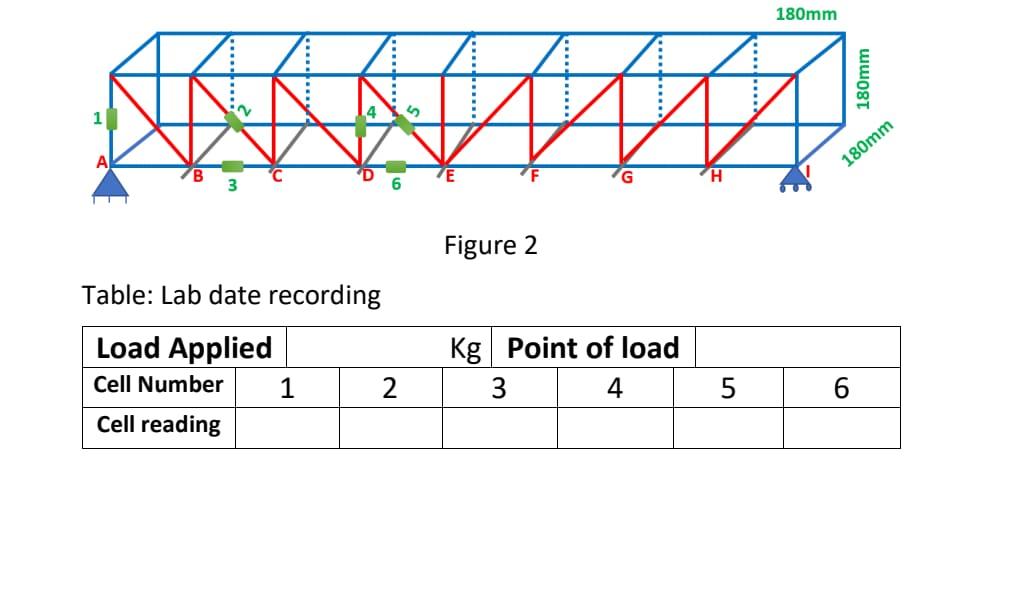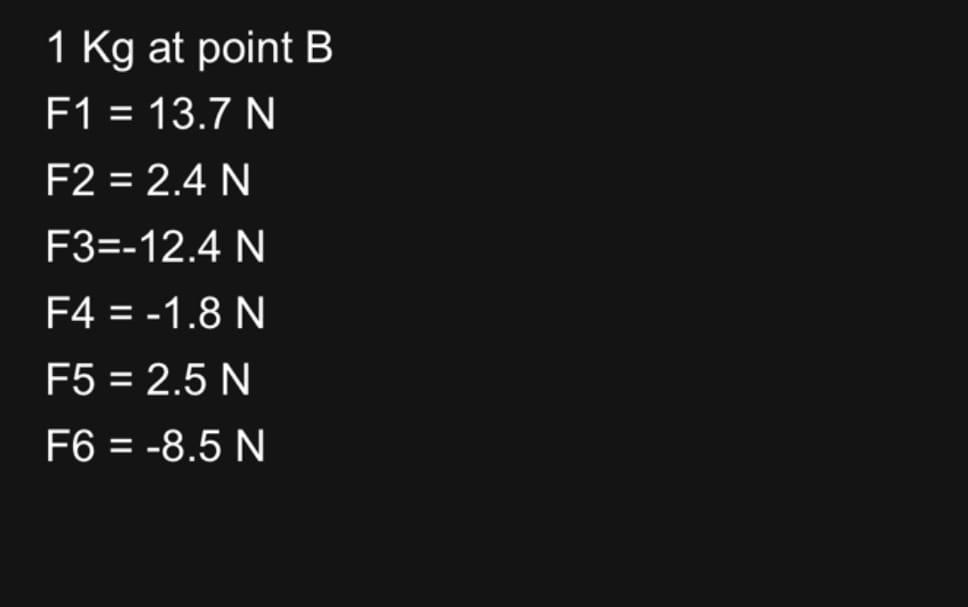Home /
Expert Answers /
Advanced Physics /
consider-the-truss-shown-in-figure-2-it-has-a-mass-of-1-2-or-3-mathrm-kg-applied-at-one-pa276
(Solved): Consider the truss shown in Figure 2 . It has a mass of 1,2 or \( 3 \mathrm{~kg} \) applied at one ...
Consider the truss shown in Figure 2 . It has a mass of 1,2 or \( 3 \mathrm{~kg} \) applied at one joint " \( \mathrm{B} \) ", " \( C \) " or " \( \mathrm{D} \) " (Please use the parameters and data you get at your lab session). The trusses have six load cells attached to the struts, as depicted in Figure 2 by the black rectangles 1-6. The struts are connected through hinges at the joints.
(b) By using the method of sections, calculate the forces in the struts with the load cells (1-6) attached.
Figure 2 Table: Lab date recording
\( 1 \mathrm{Kg} \) at point \( \mathrm{B} \) \[ \begin{array}{l} F 1=13.7 \mathrm{~N} \\ F 2=2.4 \mathrm{~N} \\ F 3=-12.4 \mathrm{~N} \\ F 4=-1.8 \mathrm{~N} \\ F 5=2.5 \mathrm{~N} \\ F 6=-8.5 \mathrm{~N} \end{array} \]
Expert Answer
To construct the free body diagram (FBD) for the truss in Figure 2, you can follow these steps: Identify the forces acting on each joint of the truss.



